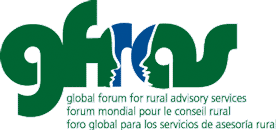 Every country has developed, formulated, and decreed national policies related to rural advisory services. Find some examples here. If you are looking for a national policy from a specific country, please use the search function, selecting the category “National policies” and the tag for the country.
Every country has developed, formulated, and decreed national policies related to rural advisory services. Find some examples here. If you are looking for a national policy from a specific country, please use the search function, selecting the category “National policies” and the tag for the country.

Activities, tip and fact sheets (21)
INGENAES Tip Sheet
In many Latin American countries, coffee is considered one of the top export crops. Many rural families use coffee sales as a significant source of income, and in Honduras coffee production is around 26 percent of the 60 percent of total agricultural production (FAO, 2015). Coffee is an ideal crop for Honduras as there is limited arable land that is suitable for other types of agriculture, and it can be grown in the mountains. However, one of the challenges associated with coffee production is how the income that is generated from the sales is used to benefit the household. This activity sheet explores how income from coffee sales might be used to improve overall family nutrition.
Download
INGENAES Material Informativo
En muchos países latinoamericanos, el café es considerado uno de los principales cultivos de exportación. Muchas familias rurales utilizan las ganancias obtenidas de la venta de café como una fuente importante de ingresos. En Honduras la producción de café se calcula que es el 26% del 60% de la producción agrícola total (FAO, 2015). El café es un cultivo ideal para Honduras, ya que existen pocas tierras arables adecuadas para otros tipos de agricultura y además, se puede cultivar en las montañas. Sin embargo, uno de los retos asociados con la producción de café es la distribución del ingreso generado por la venta del café y como este, se utiliza para beneficio del hogar.
Esta hoja de actividades explora cómo los ingresos de la venta de café pueden ser utilizados para mejorar la nutrición de la familia.
Download
Integrating Gender and Nutrition into the Granos Básicos (Basic Grains) Value Chains
Written by Ingrid OliveiraINGENAES Info Sheet
In many Latin American countries, diets are based around “basic grains” – corn and beans. Many rural poor families depend on basic grains for their survival, and they are considered the most important crops to the social and economic life of Hondurans. Corn and beans represent twelve percent of the agricultural GDP and generate about 300,000 permanent jobs in Honduras (www.hondurasnews.com/basic-grains-crops-good). However, with climate change and poor farming practices, many families do not grow enough of these crops for their household needs and other nutritional needs are not met due to an overemphasis on these two food sources.
Download
Integración del Género y la Nutrición en las Cadenas de Valor (Granos Básicos)
Written by Ingrid OliveiraINGENAES Material Informativo
En muchos países de América Latina, las dietas se basan en "granos básicos" - maíz y frijoles. Muchas familias de los sectores rurales dependen de los granos básicos para solventar sus necesidades alimentarias. En Honduras los granos básicos desempeñan un importante rol en el aspecto social y económico. El maíz y los frijoles representan el 12% del PIB agrícola y generan cerca de 300.000 empleos permanentes en Honduras. Sin embargo, debido a factores como el cambio climático y en algunos casos inadecuadas prácticas agrícolas, la productividad de estos cultivos es baja y no suple las necesidades alimentarias y nutricionales del hogar.
Download
INGENAES Tip Sheet
Nutrition is important in everyone’s lives, but what good nutrition specifically means may mean different things to different members of a community or family. Women may be the ones who prepare food, but they often have less influence on household decisions including what foods they prepare. It is important to include men in discussions as they may be making production, marketing or purchasing decisions. When men understand the contribution they can make, they can take action to improve family nutrition.
Download
INGENAES Technical Note
Aflatoxins play an important role in household health and nutrition.
Aflatoxins are fungal toxins produced by Aspergillus flavus and Aspergillus parasiticus. Aspergillus is a common form of mold that can colonize and contaminate food before harvest or during storage, especially following a drought or prolonged exposure to a high-humidity environment.
Aflatoxin exposure in children can lead to stunted growth, developmental delays, and issues with immune suppression and increased susceptibility to infectious disease. Longer-term exposure to aflatoxins increases the risk for liver and gallbladder cancer. Factors that increase the risk of aflatoxicosis include limited amounts of food, environmental conditions that favor mold growth on food, and limited regulation and oversight for aflatoxin monitoring and control.
Download
INGENAES Info Sheet
A variety of foods from the different food groups need to be consumed on a daily basis to provide the body with energy, protect the body, and to help build the body. The purpose of the “How Different Foods Help” tip sheet is to encourage you to promote eating different foods, also called balanced meals or dietary diversity, on a daily basis to the people you meet and work with.
Downlaod
INGENAES Info Sheet
Even though many smallholder farmers around the world have been able to increase production and earn higher incomes from farming, what families eat and their nutritional status has not necessarily improved. People may not realize it, but some may suffer as a result of poor nutrition.
Downlaod
INGENAES Info Sheet
Food provides essential nutrients to help one perform daily activities, to support growth, to maintain energy, and to keep one healthy. The purpose of the “Basics of Nutrition” fact sheet is to provide an overview of the nutrients that people need to consume on a daily basis.
Download
Recognizing Vitamin A Deficiency in Children
Written by Ingrid OliveiraINGENAES Info Sheet
Families need to eat certain foods to help them stay strong, healthy, productive and smart. One important nutrient that some foods provide is vitamin A. When you don’t get enough vitamin A from the foods you eat, you have trouble seeing at night and other vision problems, and you may become more vulnerable to other illnesses, such as diarrhea and measles. Children and pregnant women especially need vitamin A, and if they don’t get it their health can be negatively affected forever, leaving them vulnerable to blindness and other life threatening diseases.
Download
More...
Integrating Gender and Nutrition into Agricultural Value Chains
Written by Ingrid OliveiraINGENAES Activity Sheet
Women and men are likely to have different objectives for participating in agricultural value chains, and different abilities to access and use new technologies and information. Understanding these differences in terms of gender-based opportunities and constraints around decision-making, access and control of resources, and women's ability to engage in horizontal (e.g. producer groups) and vertical (e.g. with input suppliers and buyers) relationships along value chains is critical to developing effective agricultural value chains. By understanding the gender and nutrition dimensions along the value chain, and increasing women’s control of income generated from agricultural production, food security and family nutrition have been shown to increase.
Download
INGENAES Activity Sheet
Girls and women often have unequal status in a household which can have negative long-term outcomes. The effects of inequalities in terms of individual health and well-being are well documented. The consequences of poor nutrition include low birth weights, child and maternal mortality, disease, decreased work production, and poor classroom performance. Increasing nutritional awareness when planning, facilitating, and evaluating extension programs is essential for the long-term health benefits not only for women and girls, but also for all family members.
Download
NGENAES Activity Sheet
Child and maternal malnutrition – in particular child underweight, child micronutrient deficiencies, poor breastfeeding practices, and anemia – are by far the largest nutrition-related health burdens at the global level. “Cultural norms” are sometimes responsible for contributing to these issues and can be analyzed if the intra-household consumption patterns are “unpacked” with the community. If these cultural norms are better understood, opportunities for changing long-standing gendered behaviors related to food security and malnutrition can be improved.
Download
INGENAES Activity Sheet
Providing toddlers (ages 9 -24 months) proper nutrition is an important part of their growth and development. The purpose of the “Nutrition for Toddlers” Activity Sheet is to encourage parents to feed their toddlers nutritious foods on a daily basis.
Download

